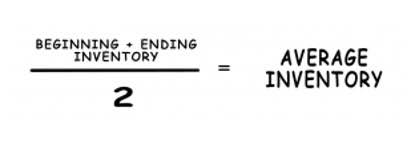How to Use an Annuity Table for Present & Future Value

Under the accrual basis of accounting, revenues are recorded at the time of delivering the service or the merchandise, even if cash is not received at the time of delivery. What is the present value of receiving a series of $300 payments at the end of each quarter for three years, if the time value of money is 8% per year? Assume that today is June 1, 2025 and that the quarterly payments will begin on September 1, 2025. In this section we will solve four exercises that calculate the present value of an ordinary annuity (PVOA).
Use our annuity calculator

In this specific case, the Present Value of an Annuity Factor is the number we multiply the cash flow by, in order to calculate the Present Value of an Annuity. The term “annuity due” means receiving the payment at the beginning of each period (e.g. monthly rent). There is a separate table for the present value of an annuity due, and it will give you the correct factor based on the second formula. If we could get a 5% interest rate, then £1,000 received one year from now is not worth £1,000 today.
What are ordinary annuities & how do they work?
Using the PVOA equation, we can calculate the interest rate (i) needed to discount a series of equal payments back to the present value. In order to solve for (i), we need to know the present value amount, the amount of the equal payments, and the length of time (n). The above calculation tells us that receiving $8,497.20 today is equivalent to receiving $400 at the end of each of the next 24 months, if the time value of money is 1% per month (or 12% per year). It also means that a company requiring a 12% annual return compounded monthly can invest up to $8,497.20 for this annuity of $400 payments. The first column (n) refers to the number of recurring identical payments (or periods) in an annuity. The other columns contain the factors for the interest rate (i) specified in the column heading.
- And once you get your head around the ordinary annuity, it’s much easier to understand the deferred annuity.
- Same deal as an ordinary annuity, but payments come at the beginning of each period (like lease payments or insurance premiums).
- They outline the payments needed to pay off a loan and how the portion allocated to principal versus interest changes over time.
- An annuity table helps you understand how much money from regular, equal payments will be worth in the future.
Understanding PVIFA: Calculating Present Value of Annuities
At the end of the 10-year period, the $10,000 lump sum would be worth more than the sum of the annual payments, even if invested at the same interest rate. An annuity is a series of payments that occur over time at the same intervals and in the same amounts. An annuity due arises when each payment is due at the beginning of a period; it is an ordinary annuity when the payment is due at the end of a period. A common example of an annuity due is a rent payment that is scheduled to be paid at the beginning of a rental period. The purpose of the present value annuity tables is to make it possible to carry out annuity calculations without the use of a financial calculator.

Discount Factor Tables

Let’s consider an individual who has a choice to obtain an annuity of dollar 60,000 per year for the succeeding 15 years, with a lending rate of 5% or a lump-sum deposit worth $550,000. He wants to find out the more reasonable possibility that through the above-mentioned equation, the PVA is determined. Then the comparison of an annuity or lump sum amount would help him decide which option is more profitable. The present value has a strong connection with the annuity table as it’s an instrument used to find out the annuity present value. Annuity tables are used by the insurance panels, actuaries, and accountants to determine how much capital has been placed in annuity and how much capital would be due by an annuitant or annuity buyer. Let’s see in detail how present value and ordinary annuity work together.
You can demonstrate this with the calculator by increasing t until you are convinced a limit of PV is essentially reached. Then enter P for t to see the calculation result of the actual perpetuity formulas. This article https://www.enterdexter.com/accrued-vacation-pay-and-its-impact-on-financial/ explains how to calculate the future value of an annuity using the annuity growth formula. It outlines the differences between ordinary annuities and annuities due, offers step-by-step guidance with examples, and explains how growth assumptions can affect your retirement planning. PV annuity tables are one of many time value of money tables, discover another at the links below.
How to Use an Annuity Table for Present & Future Value

In most of the books, they provide only the present value of an ordinary annuity table. To illustrate suppose an amount of 6,000 is received at the end of each year for 8 years. The tables provide the value at the end of period n of an amount of 1 received at the end of each period for n periods at a discount rate of i%. The future value of an annuity calculates the value of a series of cash flows occurring at certain intervals at a certain date in the future (mostly the date when the payment intervals end). The present value interest factor (PVIF) formula is used to calculate Legal E-Billing the current worth of a lump sum to be received at a future date.
Everything You Need To Master Financial Modeling
- The $1,209 in Discount on Notes Receivable is to be amortized from this balance sheet account to the income statement account Interest Revenues over the life of the note.
- Expressed another way, FreshStart earned only $3,791 in service revenues from DownCo on December 31, 2024.
- PV tables are often used to value bond cash flows (coupon payments + face value) and lease obligations, especially under IFRS 16 and ASC 842.
- Let’s consider an individual who has a choice to obtain an annuity of dollar 60,000 per year for the succeeding 15 years, with a lending rate of 5% or a lump-sum deposit worth $550,000.
- For example, if the $1,000 was invested on January 1 rather than January 31, it would have an additional month to grow.
- In these agreements, the purchaser pledges for submitting an array of regular deposits.
You don’t need to be a finance nerd or an Excel wizard to use a present value table. Alternatively, of course, if you want to get past your fear of numbers, equations, and financial mathematics, check out the course below. Put differently, buying the Tesla via a loan, in this example, would be a positive NPV decision. If you’d like to learn more about the Net Present pv of an annuity table Value (and other investment appraisal or capital budgeting techniques), do check out our course on Investment Appraisal Mastery. A “factor”, in a nutshell, is just a number we tend to multiply another number by. Now, although we’ve solved this particular question using the formula/equation, there is another way.
How to manage retirement debt: Strategies and decisions
Payments on mortgage loans usually require monthly payments of principal and interest. For example, instead of paying $100 cash a person is allowed to pay $9 per month for 12 months. The interest rate is not stated, but the implicit rate can be determined by use of present value factors.
